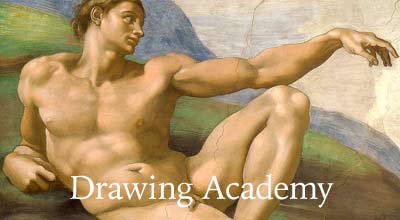How to Preserve White Paper When Painintg Wet on dry

I will use the same six premixed colors to make another wash on top of the under layer. However, this time I will apply it not wet-into-wet but wet-on-dry. The painting technique is called the saw-wash. I apply short, diagonal brushstrokes, overlapping every stroke with the previous one. The only reason I am making it is to demonstrate how to preserve white areas when making a variegated wash wet-on-dry. For this wash, I am using the medium sized mop brush. This brush is made of natural squirrel hair and comes from Escoda. It has a sizable belly and takes a lot of paint. Because it has a very pointed tip, it is easier to paint with such a brush with high precision. When needed, it is easier to make wide strokes with this brush. It releases paint in a controllable manner. Every next patch of color is mixed with the previous one easily. When I come to the area I would like to protect, I use so little pressure on the brush and only touch the paper with its tip. This way, I make very thin but precise lines. The board is tilted at about a 15 degree angle and wet paint slowly flows down, accumulating at the bottom edge of the painted area. This creates a nice juicy bead. Even though I am painting wet-on-dry, the borders between neighboring colors are very smooth. This is because areas of different colors are still wet. They intermix directly on paper. As you can see, I am not using a palette to mix paints. Instead, I add premixed colors next to each other, slightly overlapping such patches. The paint flows from one color to another, making soft and diffused gradations. When two layers of variegated washes are applied on top of each other, you need to keep one rule in mind. f you apply similar colors on top of each other, for example red-orange and orange, the resulting warm color will be deeper and stronger. However, if in two different layers you have visually complimentary colors, for example yellow and violet or red and green, such colors will produce chromatic greys, and will mute each other. You have to make the right decision about what you would like to achieve; to enhance some color and make it stronger, or calm down this color and make it more greyish.



